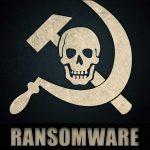CyberVolk Ransomware is a highly malicious cyber threat that targets computer systems, encrypting valuable files and demanding a ransom payment for their release. This ransomware represents a significant danger to both individual users and organizations, leading to potential data loss and financial damages. In this article, we will explore the actions and consequences of CyberVolk Ransomware, how it can be detected, and the best practices for removing it and preventing future infections.
Actions and Consequences of CyberVolk Ransomware
CyberVolk Ransomware typically infiltrates systems through phishing emails, malicious downloads, or software vulnerabilities. Once it gains access, it begins its encryption process:
- File Encryption: The ransomware scans the infected system for a wide range of file types, including documents, images, videos, and databases. It then encrypts these files using a robust encryption algorithm, rendering them inaccessible to the user.
- Ransom Note: After encryption, CyberVolk generates a ransom note, usually displayed in a text file or a pop-up window. This note contains instructions on how to pay the ransom, often demanding payment in cryptocurrency like Bitcoin to maintain the attackers’ anonymity.
- Data Theft and Extortion: In some cases, CyberVolk may also exfiltrate data before encrypting it. This double extortion tactic means that even if the victim has backups, their data could still be leaked if the ransom is not paid.
- System Degradation: The presence of ransomware can degrade system performance, cause crashes, and create additional vulnerabilities that other malware could exploit.
Detection Names for CyberVolk Ransomware
Cybersecurity firms often use various names to identify CyberVolk Ransomware. Some of these detection names include:
- Trojan:Win32/CyberVolk
- Ransom.CyberVolk
- Win32:Trojan-gen
- Ransom:MSIL/CyberVolk
- Trojan.Ransom.CyberVolk
Similar Threats to CyberVolk Ransomware
CyberVolk is part of a larger family of ransomware threats. Some similar ransomware strains include:
- Ryuk: A highly sophisticated ransomware known for targeting large organizations and demanding substantial ransom amounts.
- Dharma: Also known as Crysis, this ransomware encrypts files and appends various extensions to the filenames.
- Sodinokibi (REvil): This ransomware operates on a Ransomware-as-a-Service (RaaS) model and is known for its aggressive tactics.
- Maze: Notorious for its data exfiltration before encryption, leveraging the double extortion method.
- Phobos: This ransomware targets small to medium-sized businesses and appends specific extensions to encrypted files.
Comprehensive Removal Guide for CyberVolk Ransomware
Removing CyberVolk Ransomware requires a meticulous approach to ensure complete eradication and recovery of the system. Follow these steps to remove the ransomware:
Step 1: Isolate the Infected System
- Disconnect the infected device from the internet and any network connections to prevent the spread of the ransomware to other devices.
Step 2: Boot in Safe Mode
- Restart your computer and boot into Safe Mode. This can be done by pressing F8 or Shift+F8 during startup, depending on your operating system.
Step 3: Identify and Terminate Malicious Processes
- Open Task Manager (Ctrl+Shift+Esc) and look for suspicious processes related to CyberVolk Ransomware. Right-click on these processes and select “End Task.”
Step 4: Delete Malicious Files and Registry Entries
- Open File Explorer and navigate to common ransomware locations such as %AppData%, %LocalAppData%, %ProgramData%, %Temp%, and %SystemDrive%\Users[Username]\AppData\Roaming.
- Delete any files associated with CyberVolk Ransomware.
- Open the Registry Editor (regedit) and search for and delete registry entries related to CyberVolk Ransomware. Be cautious when modifying the registry.
Step 5: Restore Encrypted Files from Backup
- If you have a backup of your files, restore them to your system after ensuring the ransomware is completely removed.
Step 6: Perform a Full System Scan
- Use your operating system’s built-in security software to perform a full system scan and ensure no remnants of the ransomware remain.
Best Practices for Preventing Future Infections
Preventing ransomware infections requires vigilance and adherence to cybersecurity best practices. Here are some essential tips:
- Regular Backups: Regularly back up your data to an external hard drive or cloud storage. Ensure backups are not connected to your network during non-backup periods.
- Email Caution: Be wary of unsolicited emails, especially those with attachments or links. Verify the sender before opening any attachments or clicking on links.
- Software Updates: Keep your operating system, software, and security applications up to date with the latest patches and updates.
- Security Software: Use reputable security software to protect your system from malware. Ensure it includes real-time protection and regular scanning capabilities.
- Network Security: Secure your network with strong passwords, and use a firewall to block unauthorized access.
- User Education: Educate yourself and your employees (if applicable) about cybersecurity threats and safe online practices.
- Disable Macros: Disable macros in Microsoft Office files received via email, as these are common vectors for ransomware.
By following this comprehensive guide, you can better understand the threat posed by CyberVolk Ransomware, remove it effectively if your system is infected, and implement strategies to prevent future infections. Stay vigilant and proactive in your cybersecurity efforts to safeguard your data and systems.
If you are still having trouble, consider contacting remote technical support options.





